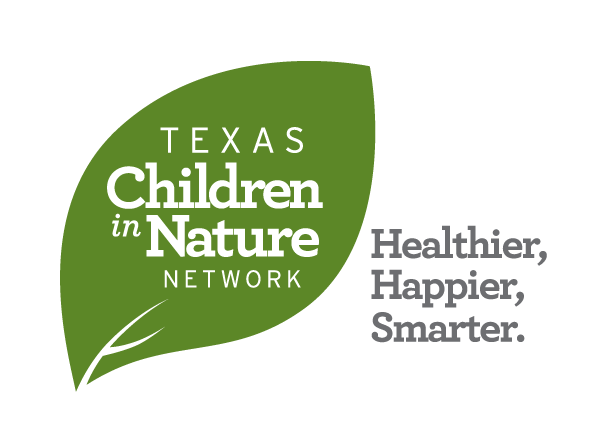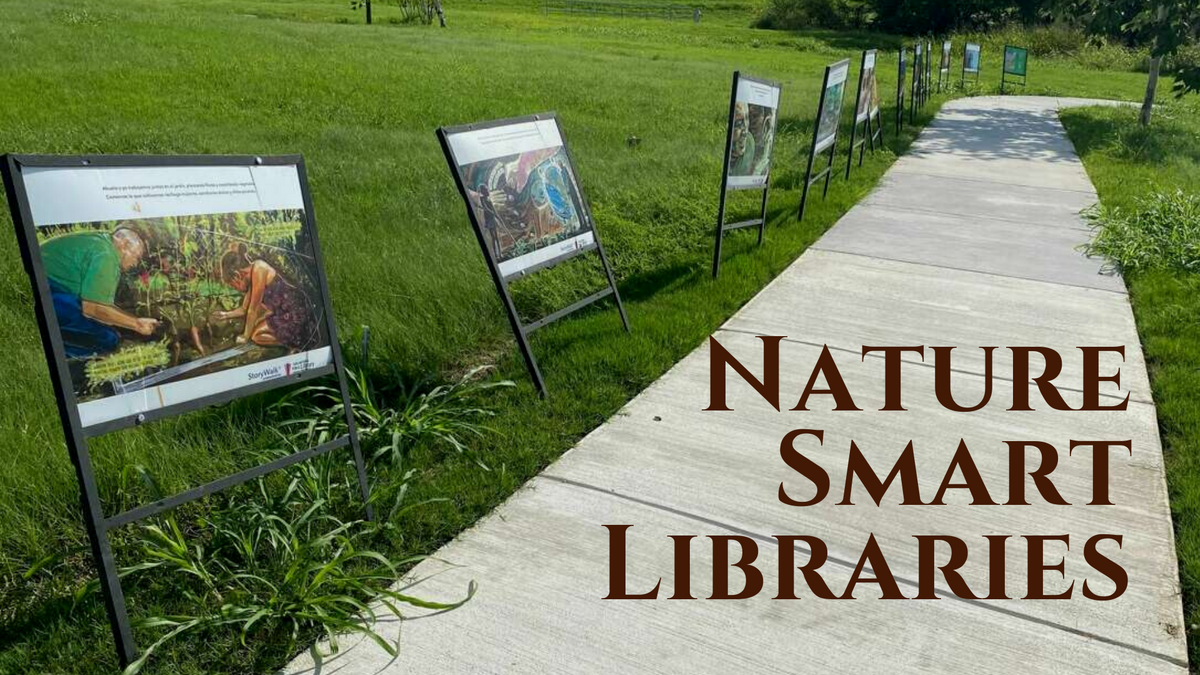City of San Antonio
Kelsey Scherschel met with Alice on March 15th to share more about the City of San Antonio's work to create Nature Smart Libraries that provide children and families more access to outdoors spaces and nature-based programming.
Kelsey, please introduce yourself and let us know a little about you:
I’m Kelsey Scherschel and I am the Natural Areas Manager for the San Antonio Parks and Recreation Department. I oversee all the parks designated as natural areas within the City of San Antonio. These are parks that are really focused on preserving properties with special natural or cultural resources or have large tracts of land. We manage the parks for public access and conservation priorities whether that be endangered species, aquifer protection, things of that nature. We also have a mission to educate the public about nature and we do that at both park sites and through outreach in the community.
Tell us a bit about Cities Connecting Children to Nature and Nature Smart Libraries.
Cities Connecting Children to Nature (CCCN) is a partnership between the National League of Cities and the Children & Nature Network. In 2018, San Antonio became a part of the second cohort of CCCN cities across the nation. As part of the initiative, we were looking at more equitable ways to create access to nature for children. We worked with our Office of Equity to determine areas of the city where the residents would really benefit from greater connection to nature. Nature Smart Libraries (NSL) was one of our main strategies that arose out of public meetings, stakeholder input, and internal meetings. We started the NSL strategy in 2019 with Cortez Library, and we did a big kick off event to signal the beginning of our work in San Antonio Libraries.
The concept of Nature Smart Libraries started in St. Paul, MN, one of the first CCCN cities. We implemented it here in San Antonio and for us it has largely showed up in the form of programming in the libraries. . NSL could either be a library space being connected with nature through the built environment, or it could include programming or both, really a mixture of anything to be honest. In San Antonio we really worked to have different ways to connect people to nature whether that be book collections focused on nature, set programming time to bring nature focused programs through our education coordinator in the parks department or through partners throughout the city.
One important thing to consider is that both libraries and parks have limited resources because they serve a very large community, so we wanted to connect with our library partners and make it a partnership and strategy that could be successful. We didn’t want to overload limited resources that already existed, and instead would serve to uplift those resources and make a greater impact in the parts of the city we were working in.
What does Nature Smart Libraries look like in San Antonio now?
How many libraries are there?
This is a hard question to answer because with Covid it has become kind of more of a natural operation for libraries. For some libraries they really started to look at their outdoor space and improve outdoor spaces and made them more utilized and friendly for the public. Some of our library spaces are already connected into parks or are adjacent to parks and we can’t take all the credit for libraries doing that, but I think the partnerships we built, the relationships we built have really helped with that consideration and the emphasis on it.
I would say there’s a good portion of the libraries in San Antonio now that in some form participate in activities that promote the outdoors whether that be programming or by improving their space whether that’s the built environment or the space directly outside the library. I think we have about thirty libraries and I want to say that in some capacity we have worked with half of them in some way, shape, or form. Sometimes too, for example, we have one library near a park where I currently work where librarians come monthly to do a story time in the park. We’ve done story time in the library too, so I have a really hard time quantifying the strategy just because it has dispersed so much, which is a good thing.
Storywalks are another thing that became very popular during Covid that has been implemented in several libraries. So, for instance the solar eclipses that are coming up later in 2023 and 2024, we are already strategizing to do programs together for that as well. It’s not set in the confines of one individual branch, we work with administrators, managers, and even individual branch librarians.
Why did San Antonio choose to focus on Nature Smart Libraries?
When we brought partners together at the very initial stages of the CCCN grant we had to come up with an implementation plan. As part of this grant, we brought stakeholders from all across the city that intersected with equity, access, and nature. Libraries were the top strategy that came up in conversations during stakeholders’ meetings.
What are some of the goals of the initiative?
A big goal is equitable access to nature specifically for children. We wanted to make sure that children in the city have connections and access to nature. The reality is that there’s not always a park or natural space that’s directly adjacent to where people live, and libraries are intrinsically a resource hub. They are a great way to connect into the community because they do offer resources and they are a trusted component of the community. It was a way to create connections within the community without it explicitly being inside a park or nature setting.
Also, another goal was just building relationships in the city. We are a very large city and I think every city is going to have some level of siloing. One of the biggest things that has come out of this strategy is the relationship building that has occurred and come out at all levels. We do have people that work in the field that are connected, we’ve got administrators and managers who are connected, and of course we have directors who are connected as well in the strategy and moving it forward. I think that’s been really productive with creating greater effectiveness between the two departments in a similar mission and outreach.
How does this program work in the nature and equity space?
When we initiated, we were specifically targeting zip codes and we looked at health data, racial data, and economic data to see essentially who had the least access to nature or the worst health outcomes who could benefit the most from creating access to nature. That’s how we decided from an equity standpoint. We’ve got an Office of Equity that has a lot of data we were able to tie into to figure that out. Also, looking at what areas of the city might not have as much access to nature inherently.
How has collaboration been important for the overall success of the program?
It’s been absolutely necessary, obviously, parks could not go in and make NSLs without the libraries. But then other partners that can’t be forgotten are these other community partners, non-profit organizations, and governmental organizations that have come together to provide programming and support to the strategy. That was really the basis of it was, a collaboration between partners across the city to implement this into greater outreach.
What types of impacts have you seen in the community due to Nature Smart Libraries?
I think just greater education and opportunities for people to learn about nature and connect with it, having more resources. If it’s built into programming that exists already or to services, just through that people are having more interface with nature and the learning opportunities that exists.
How has Texas Children in Nature Network been involved in this work and how can we help further the initiative?
Texas Children in Nature Network has been involved from the first event that we had at Cortez Library and with this first event we utilized that pop-up event model that we did for other Texas Children in Nature Network events in the past. Really it was all the partners through Texas Children in Nature Network that made it happen and that we were able to tie into to get this strategy off the ground and to get that programming started within libraries. And I think that just continued support, like that network building and connecting resources is really where it comes into play.
Thank you, Kelsey, for your time today.

